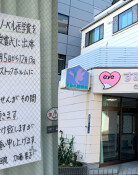Half of Koreas Air Pollutants Come from China
Half of Koreas Air Pollutants Come from China
Posted August. 09, 2004 21:59,
Korea is becoming exposed to second-hand smoke coming from China, the worlds factory, which emits pollutants into the air.
A recent research study concluded that up to 49 percent of Koreas air pollutants, such as sulfur dioxide (SO2) and nitrogen oxide (NO), come across the West Sea directly from China.
In particular, approximately 30 percent of Koreas ecosystem has been shown to be critically harmedto an unbearable levelby such pollutants coming from China, which means that this pollution problem can no longer be neglected.
China has drastically increased its use of fossils fuels such as coal in order to fuel its rapid industrialization. Seoul National Universitys Earth System Sciences Program Department Professor Park Soon-woong and his research team finished a paper titled The amount of long distance and domestically emitted pollutant acidity accumulated in Koreas ecosystem. According to the paper, during the period from 1994 to 1998, air pollutants such as sulfur dioxide and nitrogen oxides originating from China composed an annual average of 40 percent and 49 percent each, respectively, of Koreas air pollutants.
Until now, there was constant controversy among scholars regarding the amount of air pollutants moving from China to Korea.
Professor Parks teams paper, which was written based on data collected jointly with the Chinese Science Research Institute and which measured the amount of air pollutants emitted, is likely to become a turning point for the environmental dispute between Korea and China.
The paper analyzed the amount of air pollutants produced in Korea, China, and Japan during the period of research by region, and then assuming that Korea did not produce air pollutants, measured the effects of Chinese pollutants crossing into Korea. This method of research is used in Europe to scientifically analyze the trans-boundary effects of pollution.
Even under the assumption that Korea did not produce air pollutants, Koreas air pollution numbers were still high, meaning that air pollutants came from China riding on northwestern or southwestern winds. Air pollutants originating from Japan do not have any significant influence over the Korean Peninsula due to the flow of the atmosphere.
After measuring the amount of pollutants, it has been concluded that sulfur dioxide and nitrogen oxides originate mainly from east-coast industrial zones such as the Shanghai, Quingdao, Dalian and inner industrial zones such as Wuhan and Zhangzhou.
If the amount of sulfur dioxide is high in the atmosphere, plants will wither to death, and when nitrogen oxides react with ultraviolet rays it will increase the density of ozone, which in turn can seriously harm the lungs. Furthermore, both pollutants cause acid rains, and when dissolved in water, cause eutrophication.
According to Professor Parks paper, 42 percent of Koreas ecosystem has been damaged by sulfur dioxide. One-third of the damage was caused by domestic pollutants, while the other two-thirds were caused by air pollutants flying in from China.
In addition, nitrogen oxides have affected the ecosystem throughout the Korean peninsula, and it has been analyzed that 65 percent of this effect is due to domestic factors while 35 percent is due to China.
The paper is expected to appear in the September issue of Atmospheric Environment, a scientific journal published in the U.K.
By late August, the National Institute of Environmental Research also plans to publish a paper reporting using 1998 as a baseline; 20 percent of sulfur dioxide in Korea came from China that year, hence igniting the controversy regarding air pollutants originating from China.
Jin Lee leej@donga.com
Headline News
- South Korea’s migrant population surpasses five percent
- U.S. acting ambassador affirms joint exercises with South Korea
- China and Japan escalate dispute over naval radar incident
- Uptempo claims D3 Seoul basketball championship convincingly
- Democratic Party pushes insurrection court despite opposition warnings







